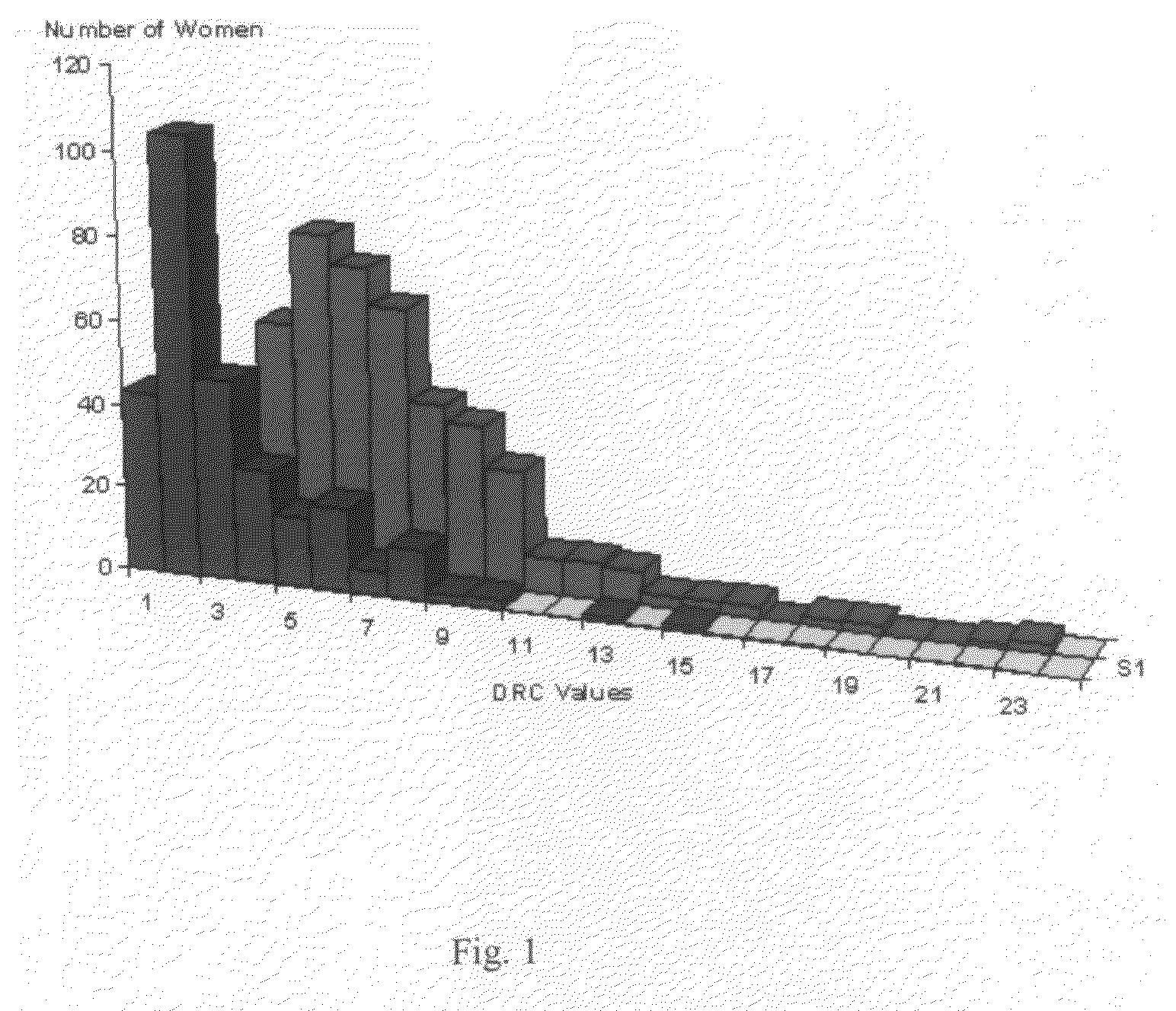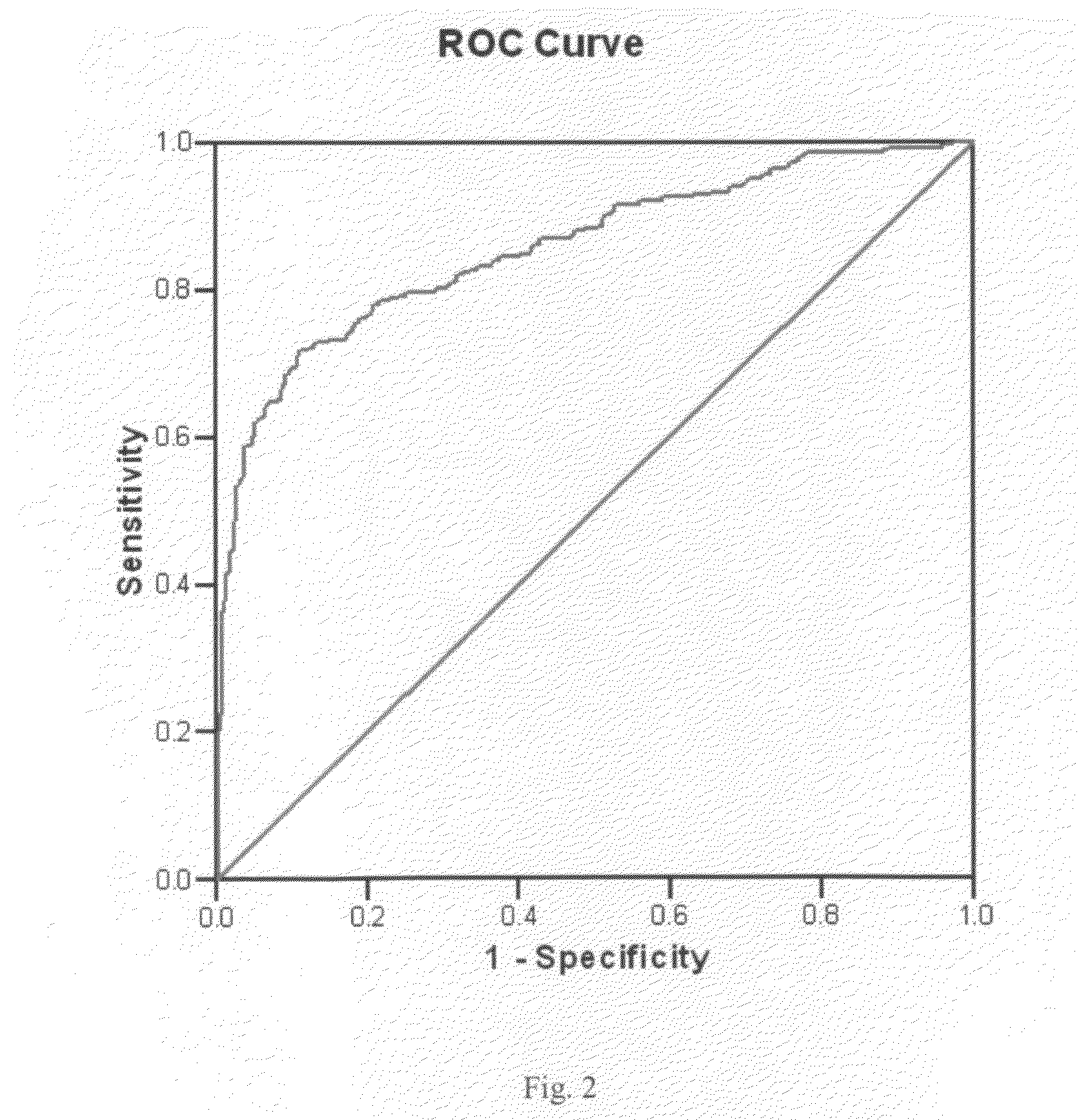Method for using DNA repair capacity as a biomarker of breast cancer risk in women
- Summary
- Abstract
- Description
- Claims
- Application Information
AI Technical Summary
Benefits of technology
Problems solved by technology
Method used
Image
Examples
Embodiment Construction
[0076]As part of the DNA repair capacity and breast cancer research project that was initiated in the laboratory of one of the inventors in 2006 and is still ongoing (2008), we analyzed the association and predictability of the DNA repair capacity (DRC) and breast cancer where we found a very strong association. The methods utilized to find that DRC can be utilized as a predictor of breast cancer are:
1. Blood Collection and Isolation of Lymphocytes from Women:
[0077]Thirty milliliters of peripheral blood is obtained from each woman (either a breast cancer patient or a control) who is collected in heparinized tubes. The lymphocytes are then isolated by the Ficoll gradient technique and suspended in freezing media containing 10% dimethyl sulfoxide, 40% RPMI-1640 medium, 50% fetal bovine serum and 1% antibiotic / antimycotic, and 2.0 ml aliquots stored in −80° C. freezer. These lymphocytes are later thawed in batches for the host cell reactivation assays (Qiao et al. 2002).
2. Measurement ...
PUM
| Property | Measurement | Unit |
|---|---|---|
| Temperature | aaaaa | aaaaa |
| Fraction | aaaaa | aaaaa |
| Fraction | aaaaa | aaaaa |
Abstract
Description
Claims
Application Information
 Login to View More
Login to View More - R&D
- Intellectual Property
- Life Sciences
- Materials
- Tech Scout
- Unparalleled Data Quality
- Higher Quality Content
- 60% Fewer Hallucinations
Browse by: Latest US Patents, China's latest patents, Technical Efficacy Thesaurus, Application Domain, Technology Topic, Popular Technical Reports.
© 2025 PatSnap. All rights reserved.Legal|Privacy policy|Modern Slavery Act Transparency Statement|Sitemap|About US| Contact US: help@patsnap.com


